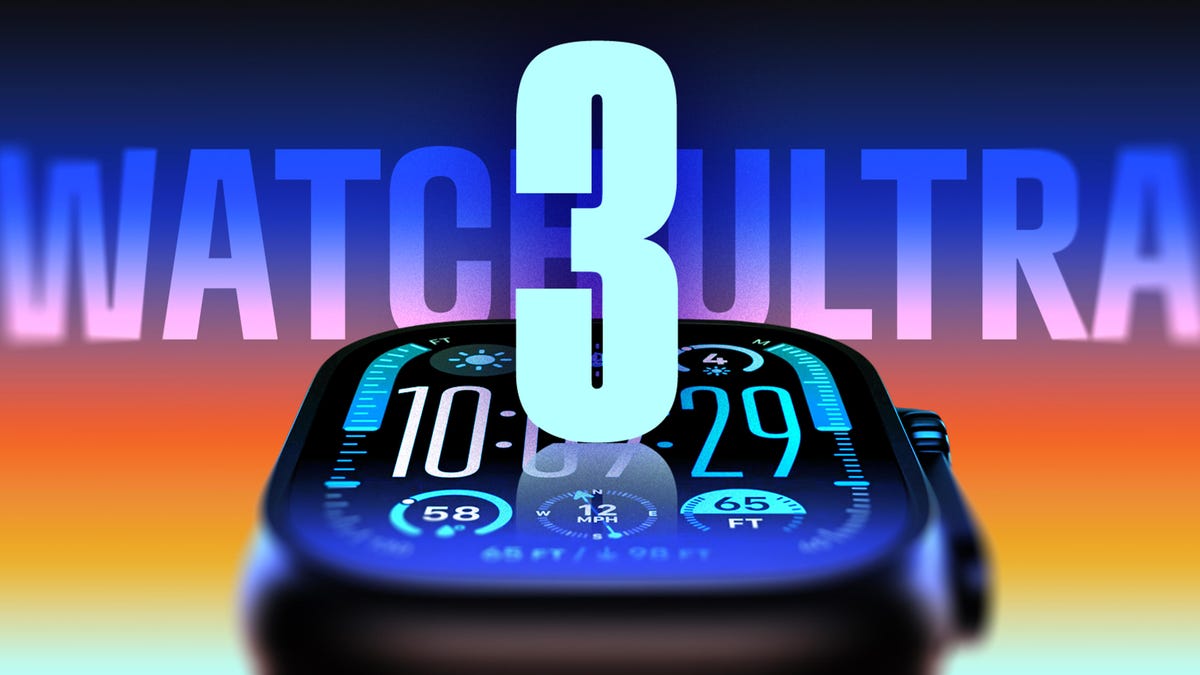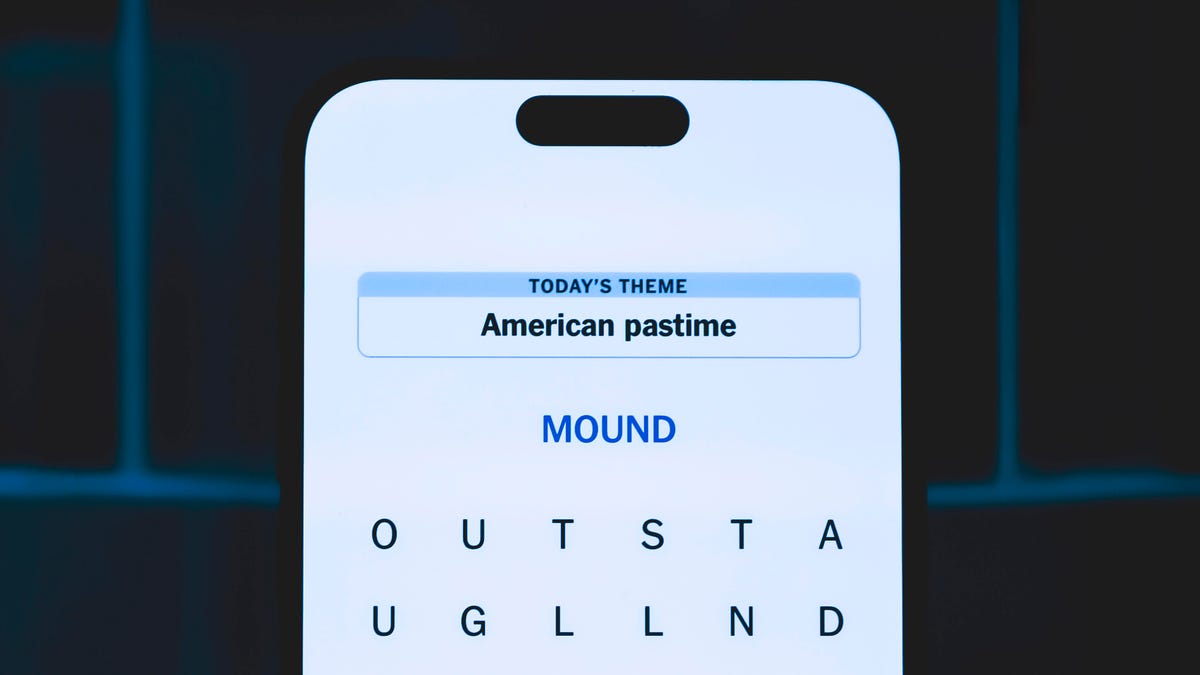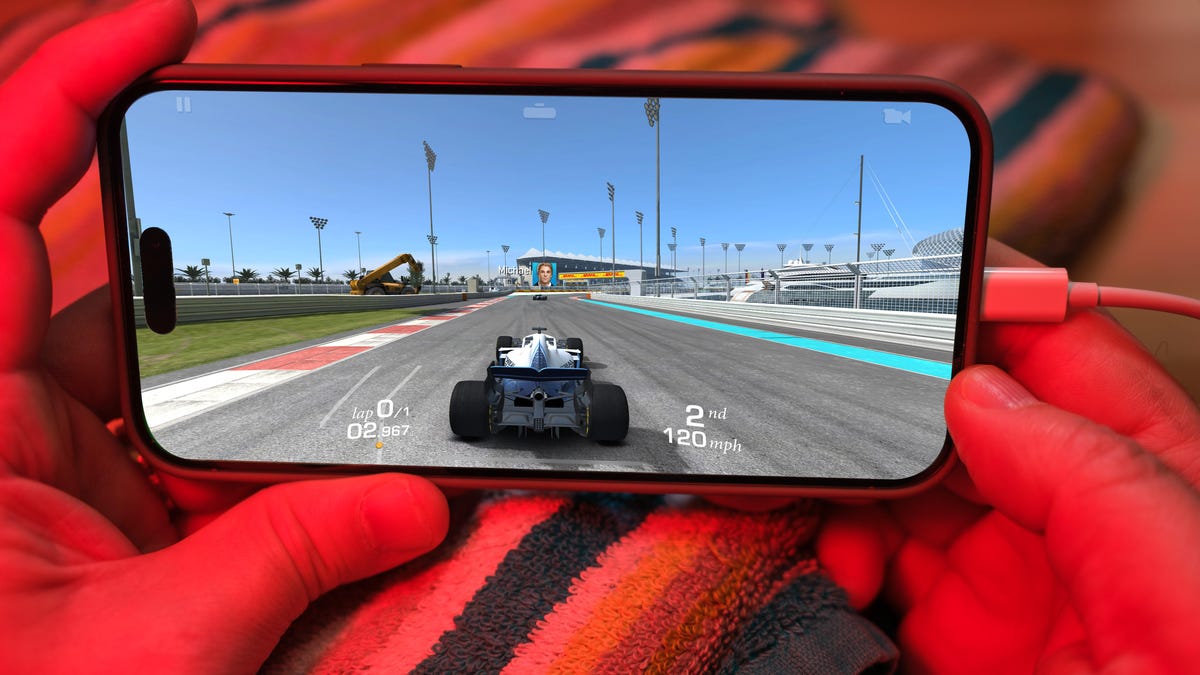Technologies
Apple Watch Ultra 3 Rewards Smartwatch Owners’ Patience
The high-performance Apple smartwatch gets the upgrade people have been waiting for.

If you’re more comfortable hiking mountain trails or gliding under water, or you just prefer a chunky smartwatch with days of battery life, your patience over the last couple of years has paid off.
Today, Apple announced the Apple Watch Ultra 3, the next generation of its high-performance smartwatch. The Ultra 3 adds a brighter, larger display, 5G cellular communication, satellite connectivity, a battery life increase of up to 42 hours and the ability to detect whether you might be suffering from hypertension.
Apple Watch Ultra fans have had to spend a while watching time pass on their Ultra-exclusive Wayfinder face. The Ultra 2 arrived in 2023, but last year Apple merely added a new Satin Black color — even as the Apple Watch Series 10 gained a better processor and adopted a screen that became the largest in the line.
Now the Ultra 3 is here to satisfy those who want the most smartwatch Apple can offer.
The Apple Watch Ultra 3 costs $799 (£749, AU$1,399), with preorders starting today. The first shipments and in-store availability arrive Sept. 19.
We’re following Apple news closely to see how it compares to everything we had expected to see.
The Apple Watch Ultra 3 screen size is back on top
The brilliant screen on the Apple Watch Ultra 3 is now slightly larger than its predecessor, at a 422×514-pixel resolution (up from the Ultra 2’s 410×502 pixels), though the case itself hasn’t expanded. Instead, Apple has slimmed the bezel to bring the active edge of the screen closer to the frame.
Speaking of the frame, it’s now created using a 3D printing process that uses 100% recycled titanium and half the amount of raw materials as earlier generations.
The screen is also better than the Ultra 2, with an LPTO3 OLED always-on Retina display that has the same faster refresh rate introduced with the Series 10. That means you’ll see a second hand that continually updates, or an active stopwatch timer, without having to raise your wrist and engage the screen. Screen brightness when viewing from an angle has also improved, according to Apple.
Even more battery life
The Apple Watch Ultra and Ultra 2 boasted much longer battery stamina than the regular watch, thanks to their physically larger batteries: about 36 hours of regular use, or 72 hours with low power mode on.
With the Apple Watch Ultra 3, you might forget the last time you put it onto its charger. Its larger battery and improved battery life get up to 42 hours on a charge. Continuous workouts can extend to 20 hours in low power mode while retaining full GPS and heart rate readings.
The Ultra 3 also joins the Series 10 and Series 11 by offering fast charging. Apple claims 45 minutes of charging will get the watch up to 80% full, or 75 minutes to top out at 100%. Since most people probably aren’t going to run the watch down to zero, a more realistic circumstance is being able to pop it onto a charger for just 15 minutes and gain 12 hours of battery life.
Apple says a number of factors contribute to the improved battery life in the Ultra 3: the more efficient display, larger battery and redesigned radios for 5G cellular and satellite communications. We expected a new processor as well, but surprisingly, the Ultra 3 is powered by the same S10 chip that runs the Apple Watch Series 11 and Series 10.
Connect to satellite services, even without an iPhone
Most phones and smartwatches are designed with the expectation that they operate in areas where cellular or Wi-Fi networks are easily available. The Apple Watch Ultra almost expects you to get lost, with that larger battery and dual-GPS location tracking. But if something unfortunate happens while you’re away from everything, you still want to be able to signal for help or keep friends alerted to your whereabouts.
The Ultra 3 now includes on-device satellite communication, which means as long as the watch has a view of the sky, it can connect to satellites. In most situations, you’d also have a satellite-capable iPhone with you, but that’s not helpful if the phone’s battery is drained. Apple says it redesigned the radios and antenna to double the signal strength.
As with the iPhone, Emergency SOS via satellite is free for two years, though Apple has not announced any pricing for the service since it was launched. Text messaging and Find My services via satellite are also available as long as you have an active cellular plan.
As for cellular connections, all configurations of the Apple Watch Ultra include cellular capabilities, and now the Ultra 3 is capable of connecting to 5G networks. It uses 5G RedCap (for «reduced capacity») technology, which delivers 5G access but without the power requirements that a device such as the iPhone can handle easily.
Health and fitness features at the forefront
As with the Apple Watch Series 11, the Ultra 3 also looks for possible hypertension, or high blood pressure, based on readings it takes during the course of a month. Apple expects its hypertension detection, currently under review by the FDA, to be available in 150 countries and regions this month.
That’s in addition to existing heart rate and ECG measuring, as well as the ability to detect blood-oxygen levels, a feature that’s been temporarily blocked in the US due to litigation (though Apple recently developed a workaround).
Apple also announced that the Sleep app will include a new Sleep Score feature to help users track and adjust sleep more easily.
When Apple announced WatchOS 26 and iOS 26, it introduced Workout Buddy, a virtual companion that provides stats and encouragement while you’re working out, such as on a bike ride, run or walk. (CNET’s Vanessa Hand Orellana got details from Apple’s team developing it.) As a watch designed for workouts, it’s natural that the Apple Watch Ultra 3 brings Workout Buddy along for the ride/run/amble.
Other health and workout features carry over from the Ultra 2, such as water resistance to 100m and scuba diving to 40m, IP6X dust resistance and durability in extreme temperature and altitude environments. It includes dual GPS (L1 and L5) radios for more precise location tracking and wayfinding.
Technologies
Today’s NYT Connections Hints, Answers and Help for Nov. 9, #882
Here are some hints and the answers for the NYT Connections puzzle for Nov. 9, #882

Looking for the most recent Connections answers? Click here for today’s Connections hints, as well as our daily answers and hints for The New York Times Mini Crossword, Wordle, Connections: Sports Edition and Strands puzzles.
Today’s NYT Connections puzzle has a goofy purple category once again. When I saw «Pufnstuf» in the puzzle, you bet my 1970s heart leapt, but sadly, there was no category of just Gen X kids’ show characters. Think on that one for the future, New York Times. Anyway, if you need help with today’s Connections, you’re in the right place. Read on for clues and today’s Connections answers.
Don’t miss any of our unbiased tech content and lab-based reviews. Add CNET as a preferred Google source.
The Times now has a Connections Bot, like the one for Wordle. Go there after you play to receive a numeric score and to have the program analyze your answers. Players who are registered with the Times Games section can now nerd out by following their progress, including the number of puzzles completed, win rate, number of times they nabbed a perfect score and their win streak.
Read more: Hints, Tips and Strategies to Help You Win at NYT Connections Every Time
Hints for today’s Connections groups
Here are four hints for the groupings in today’s Connections puzzle, ranked from the easiest yellow group to the tough (and sometimes bizarre) purple group.
Yellow group hint: Neat and clean.
Green group hint: Green Bay.
Blue group hint: Think on it.
Purple group hint: Tweet, chirp, caw.
Answers for today’s Connections groups
Yellow group: Personal grooming items.
Green group: Packed.
Blue group: Ponder.
Purple group: Starting with bird homophones.
Read more: Wordle Cheat Sheet: Here Are the Most Popular Letters Used in English Words
What are today’s Connections answers?
The yellow words in today’s Connections
The theme is personal grooming items. The four answers are brush, mirror, nail file and tweezers.
The green words in today’s Connections
The theme is packed. The four answers are compact, dense, thick and tight.
The blue words in today’s Connections
The theme is ponder. The four answers are deliberate, muse, noodle and reflect.
The purple words in today’s Connections
The theme is starting with bird homophones. The four answers are cranium (crane), cronut (crow), lunar (loon) and Pufnstuf (puffin).
Technologies
Today’s NYT Strands Hints, Answers and Help for Nov. 9 #616
Today’s NYT Strands puzzle is fun one, although some of the answers are long and might be a bit tough to unscramble.

Looking for the most recent Strands answer? Click here for our daily Strands hints, as well as our daily answers and hints for The New York Times Mini Crossword, Wordle, Connections and Connections: Sports Edition puzzles.
Today’s NYT Strands puzzle is a fun one. Some of the answers are long and might be a bit tough to unscramble, so if you need hints and answers, read on.
I go into depth about the rules for Strands in this story.
If you’re looking for today’s Wordle, Connections and Mini Crossword answers, you can visit CNET’s NYT puzzle hints page.
Read more: NYT Connections Turns 1: These Are the 5 Toughest Puzzles So Far
Don’t miss any of our unbiased tech content and lab-based reviews. Add CNET as a preferred Google source.
Hint for today’s Strands puzzle
Today’s Strands theme is: How enchanting!
If that doesn’t help you, here’s a clue: Dazzling personality.
Clue words to unlock in-game hints
Your goal is to find hidden words that fit the puzzle’s theme. If you’re stuck, find any words you can. Every time you find three words of four letters or more, Strands will reveal one of the theme words. These are the words I used to get those hints but any words of four or more letters that you find will work:
- TEEN, SURE, ENSURE, CRIT, PONE, PACE, PACES, TEAR, CHAT, CHAR, TRANCE, RAID
Answers for today’s Strands puzzle
These are the answers that tie into the theme. The goal of the puzzle is to find them all, including the spangram, a theme word that reaches from one side of the puzzle to the other. When you have all of them (I originally thought there were always eight but learned that the number can vary), every letter on the board will be used. Here are the nonspangram answers:
- ENTRANCE, CAPTIVATE, HYPNOTIZE, SPELLBIND
Today’s Strands spangram
Today’s Strands spangram is CHARMEDIMSURE. To find it, look for the C that’s the last letter on the bottom row, and wind up and over.
Technologies
The Truth Behind Always Charging Your Phone and Battery Life Explained
Here’s the science behind your phone’s battery life. Apple, Google and Samsung weigh in on best practices.

In the not-so-distant past smartphone users were told not to leave their phones plugged in overnight or it could do serious damage to the battery. While current smartphone models now have protection from accidentally overcharging, plenty of folks still have questions about whether charging their devices for extended periods of time will damage the battery.
The short answer is no. Keeping your phone plugged in all the time won’t ruin your battery. Modern smartphones are built with smart charging systems that cut off or taper power once they’re full, preventing the kind of «overcharging damage» that was common in older devices. So if you’re leaving your iPhone or Android on the charger overnight, you can relax.
That said, «won’t ruin your battery» doesn’t mean it has no effect. Batteries naturally degrade with age and use, and how you charge plays a role in how fast that happens. Keeping a phone perpetually at 100% can add extra stress on the battery, especially when paired with heat, which is the real enemy of longevity.
Understanding when this matters (and when it doesn’t) can help you make small changes to extend your phone’s lifespan.
Don’t miss any of our unbiased tech content and lab-based reviews. Add CNET as a preferred Google source.
The science behind battery wear
Battery health isn’t just about how many times you charge your phone. It’s about how it manages voltage, temperature and maintenance. Lithium-ion batteries age fastest when they’re exposed to extreme levels: 0% and 100%.
Keeping them near full charge for long stretches puts additional voltage stress on the cathode and electrolyte. That’s why many devices use «trickle charging» or temporarily pause at 100%, topping up only when needed.
Still, the biggest threat isn’t overcharging — it’s heat. When your phone is plugged in and running demanding apps, it produces heat that accelerates chemical wear inside the battery. If you’re gaming, streaming or charging on a hot day, that extra warmth does far more harm than leaving the cable plugged in overnight.
Apple’s take
Apple’s battery guide describes lithium-ion batteries as «consumable components» that naturally lose capacity over time. To slow that decline, iPhones use Optimized Battery Charging, which learns your daily routine and pauses charging at about 80% until just before you typically unplug, reducing time spent at high voltage.
Apple also advises keeping devices between 0 to 35 degrees Celsius (32 to 95 degrees Fahrenheit) and removing certain cases while charging to improve heat dissipation. You can read more on Apple’s official battery support page.
What Samsung (and other Android makers) do
Samsung offers a similar feature called Battery Protect, found in One UI’s battery and device care settings. When enabled, it caps charging at 85%, which helps reduce stress during long charging sessions.
Other Android makers like Google, OnePlus and Xiaomi include comparable options — often called Adaptive Charging, Optimized Charging or Battery Care — that dynamically slow power delivery or limit charge based on your habits. These systems make it safe to leave your phone plugged in for extended periods without fear of overcharging.
When constant charging can hurt
Even with these safeguards, some conditions can accelerate battery wear. As mentioned before, the most common culprit is high temperature. Even for a short period of time, leaving your phone charging in direct sunlight, in a car or under a pillow can push temperatures into unsafe zones.
Heavy use while charging, like gaming or 4K video editing, can also cause temperature spikes that degrade the battery faster. And cheap, uncertified cables or adapters may deliver unstable current that stresses cells. If your battery is already several years old, it’s naturally more sensitive to this kind of strain.
How to charge smarter
You don’t need to overhaul your habits but a few tweaks can help your battery age gracefully.
Start by turning on your phone’s built-in optimization tools: Optimized Battery Charging on iPhones, Battery Protect on Samsung devices and Adaptive Charging on Google Pixels. These systems learn your routine and adjust charging speed so your phone isn’t sitting at 100% all night.
Keep your phone cool while charging. According to Apple, phone batteries perform best between 62 and 72 degrees Fahrenheit (16 to 22 degrees Celsius). If your phone feels hot, remove its case or move it to a better-ventilated or shaded spot. Avoid tossing it under a pillow or too close to other electronics, like your laptop, and skip wireless chargers that trap heat overnight.
Use quality chargers and cables from your phone’s manufacturer or trusted brands. Those cheap «fast-charge» kits you find online often deliver inconsistent current, which can cause long-term issues.
Finally, don’t obsess over topping off. It’s perfectly fine to plug in your phone during the day for short bursts. Lithium-ion batteries actually prefer frequent, shallow charges rather than deep, full cycles. You don’t need to keep it between 20% and 80% all the time, but just avoid extremes when possible.
The bottom line
Keeping your phone plugged in overnight or on your desk all day won’t destroy its battery. That’s a leftover myth from a different era of tech. Modern phones are smart enough to protect themselves, and features like Optimized Battery Charging or Battery Protect do most of the heavy lifting for you.
Still, no battery lasts forever. The best way to slow the inevitable is to manage heat, use quality chargers and let your phone’s software do its job. Think of it less as «babying» your battery and more as charging with intention. A few mindful habits today can keep your phone running strong for years.
-

 Technologies3 года ago
Technologies3 года agoTech Companies Need to Be Held Accountable for Security, Experts Say
-

 Technologies3 года ago
Technologies3 года agoBest Handheld Game Console in 2023
-

 Technologies3 года ago
Technologies3 года agoTighten Up Your VR Game With the Best Head Straps for Quest 2
-

 Technologies4 года ago
Technologies4 года agoVerum, Wickr and Threema: next generation secured messengers
-

 Technologies4 года ago
Technologies4 года agoBlack Friday 2021: The best deals on TVs, headphones, kitchenware, and more
-

 Technologies4 года ago
Technologies4 года agoGoogle to require vaccinations as Silicon Valley rethinks return-to-office policies
-

 Technologies4 года ago
Technologies4 года agoOlivia Harlan Dekker for Verum Messenger
-

 Technologies4 года ago
Technologies4 года agoiPhone 13 event: How to watch Apple’s big announcement tomorrow
